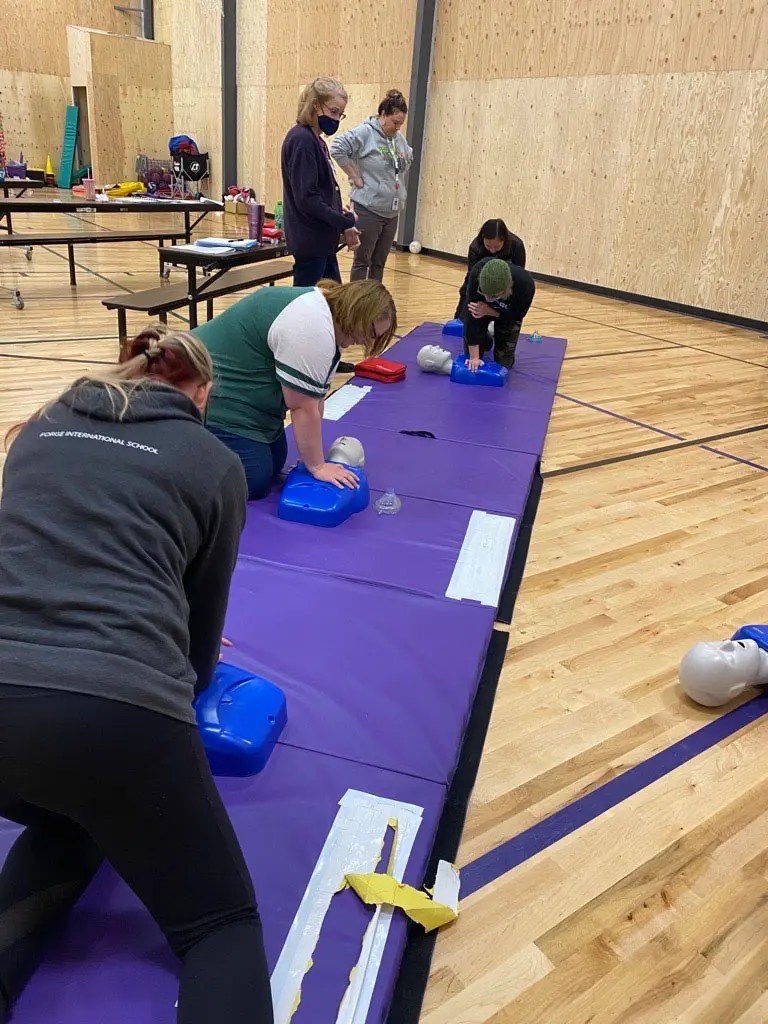How to Become a CPR Instructor:
Getting CPR certified is a major step towards keeping everyone around you safe. You’ll be well trained and ready to act in an emergency. While this is an accomplishment in of itself, there is always the option to go the extra mile and become a CPR instructor. These highly trained professionals pass their knowledge along to the next generation of students eager to learn lifesaving techniques. Here’s how to become one.
1. Acquire BLS Certification
First things first. In order to teach any subject, you’ll need to know it backwards and front. True leaders always lead from the front and that means setting an example. Experience is easily the best teacher there is, so getting your hands dirty before teaching is vital. After getting certified, you’ll have an in depth understanding of the course and will feel confident in teaching it to others.
Getting certified is quick and can be completed within a day. At Idaho Medical Academy, we have two different classroom models. You can take the entire class at our campus or a choose a hybrid option where you complete the written portion online beforehand. The two options are identical, training you to become a lifesaver and providing you with a certification to prove it.
During the course, you’ll receive training in lifesaving techniques for adults, children and infants. This includes chest compressions, rescue breaths, choking relief, scene assessment and AED use. After passing the written test and skills evaluation you will officially be certified to perform CPR.
2. Complete a BLS instructor course
While getting certified is extremely important, it’s only the beginning. The next step is to pass a BLS instructor course. This expands on the concepts from the initial course and prepares you to stand in front of a class to teach. Explaining and demonstrating the principles of CPR goes far beyond just learning them. Teaching is a skill in of itself, so it’s necessary to take the time to learn how to do it. The course will walk through the curriculum itself and highlight the important information each student needs to learn. You’ll learn how to evaluate students’ knowledge. This includes grading their written tests and monitoring their hands-on application of compression and rescue breaths. You’ll need to be an expert in proper technique to ensure they learn it right.
All things considered; instructors have an extremely important job. They teach countless people the methods of CPR. If they were to teach it improperly, those people may end up in an emergency without proper training. This could end with failed CPR and the victim dying before help can arrive. All of this depends on the quality of the training. The person performing the CPR may be the hero, but they owe a lot to their training and the instructor who provided it.
After the course, you’ll need to get some practical training. This involves having your first class monitored by other instructors. They’ll make sure you are properly explaining each part of the curriculum and interacting well with the students. From there, you’ll receive feedback on ways you can improve your teaching. After successfully teaching a trial class, you’ll be prepared to start your career as a CPR instructor!
3. Start Teaching
Now that you’re ready to go, you have quite a few options when it comes to finding work. Some instructors start their own business, set their own rates and find their own clients. This can be a very lucrative option, as classes are in high demand from workplaces and schools. Be advised that this comes with all the challenges of becoming a freelancer, such as setting up an LLC, doing your own taxes and constantly hunting for work. While this may be the more challenging option, it also brings with it the potential for high earning.
You can also work for an organization that teaches CPR classes on a regular basis. This may include academies and training centers, hospitals, or non-profit organizations such as the American Red Cross. Taking this path has the benefit of having classes arranged for you to teach. You’ll also be working with other instructors who can help you sharpen your skills. Most employed CPR instructors work part time and use their teaching as a side income along with a job in EMS or healthcare.
The process of teaching CPR can be extremely rewarding. You’ll get the chance to travel to all kinds of different organizations and meet countless people interested in learning how to save lives. Additionally, the knowledge that your efforts have the potential to pay off with someone being saved one day makes the hard work all the more worth it.
To keep you on your toes, you’re required to renew your certification every two years. While you may be teaching classes on a regular basis, the recertification process goes the extra mile towards keeping your skillset sharp. To be eligible for renewal, instructors will need to have taught at least four classes in the two years since certification, retake the associated exams, and complete an additional monitoring session.
Overall, teaching CPR is a perfect way to help others while building an exciting and fulfilling career. If you’re looking to become an instructor or would simply like to learn how to save a life, then Idaho Medical Academy’s CPR courses are a perfect match for you. We love talking to those interested in learning lifesaving techniques or even a career in the medical field. To explore all your options with us, feel free to explore the website or give us a call. We look forward to hearing from you!








